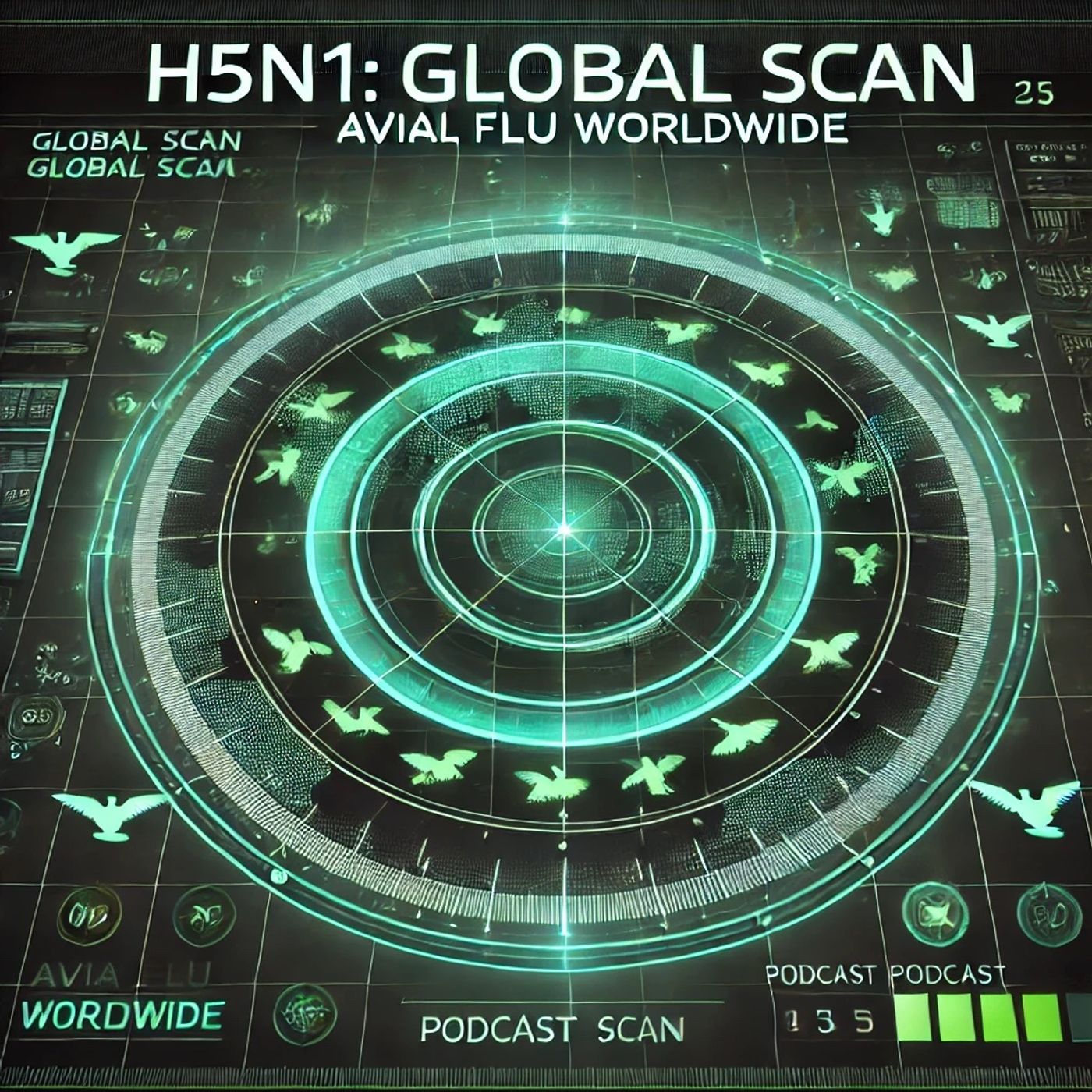Podcast Episode Details
Back to Podcast Episodes
Global H5N1 Avian Flu Outbreak Intensifies: 986 Human Cases Reported Across 25 Countries with 47 Percent Fatality Rate
Welcome to H5N1 Global Scan: Avian Flu Worldwide. I’m your host, bringing you a comprehensive update on the global impact of H5N1 avian influenza as of August 2025.
First, let’s take a continental look. Since 2020, H5N1 outbreaks have been reported on every continent except Australia, affecting wild birds, poultry, and increasingly, mammals. In North America, the United States faces widespread outbreaks—32 states have reported infections in commercial or backyard poultry so far this year. The virus has now reached all 50 U.S. states and Canada, resulting in more than 168 million poultry culled since 2022. Human exposure remains rare, but this year saw the first U.S. death and over 70 confirmed human cases, primarily among those with direct animal contact. According to the CDC, surveillance is tight, and the public risk remains low but is being closely monitored.
In Latin America, outbreaks have struck both wild and domestic birds from Mexico to Peru, with Peru reporting new infections in backyard poultry in early 2025. Mexico saw its first fatal human case this spring, a reflection of H5N1’s growing reach.
Africa continues to contend with recurring poultry losses, impacting food supply and trade. In Europe, the virus remains entrenched in wildlife and livestock, with the UK reporting spillover into farm workers and even sheep, which has not been common before.
Asia presents a particularly sobering picture. Cambodia saw 11 human cases between January and July 2025, seven of them in June alone. Children accounted for most fatal outcomes. India and other countries have also reported new cases and deaths this year, primarily linked to close contact with infected birds.
Globally, the World Health Organization reports 986 human infections with a 47% fatality rate since 2003, and confirms avian influenza is circulating in wild birds, poultry, and some mammals in 25 countries. The WHO continues to regard overall population risk as low but stresses that outbreaks must be reported and monitored due to the virus’s pandemic potential.
Key international efforts are ramping up. The Global Virus Network—a partnership of virologists in over 40 countries—recently issued an urgent call for enhanced surveillance, transparency, and preparation for possible human-to-human transmission. WHO and the UN’s Food and Agriculture Organization emphasize strong cross-border coordination and data-sharing. Countries are urged to maintain biosecurity in farms, swiftly cull affected flocks, and monitor both animal and human populations.
Vaccine development is advancing. Leading research initiatives, particularly in the U.S. and Europe, are trialing new vaccines tailored to the current H5N1 variant. However, deployment remains limited to high-risk workers and poultry rather than the general public.
National strategies vary. The United States focuses on targeted testing, strict animal movement controls, and public health surveillance. The UK emphasizes rapid detection and regional containment. Asian nations like Cambodia emphasize community awareness and backyard biosecurity, while some lower-income countries cite challenges due to limited resources.
Cross-border trade is significantly impacted, with export bans on poultry and related products straining economies, especially in Asia and Europe.
Each region faces unique challenges, but experts agree: collaboration, vigilance, and swift action are essential.
Thank you for tuning in to H5N1 Global Scan: Avian Flu Worldwide. For more updates, join us next week. This has been a Quiet Please production. For more, check out quietplease.ai.
For more http://www.quietplease.ai
Get the best deals https://amzn.to/3ODvOta
Published on 2 weeks, 5 days ago